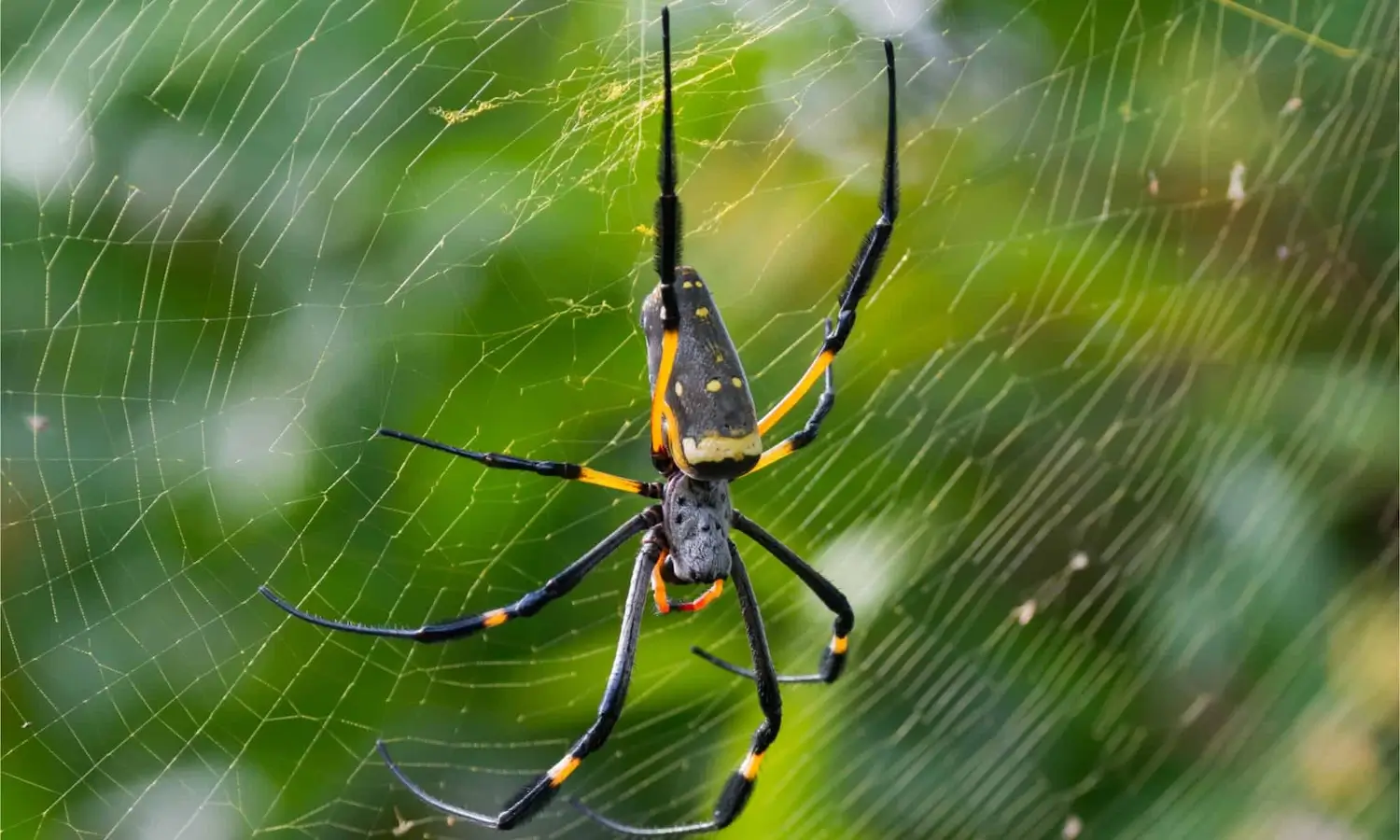
August 24, 2025

Banana spiders can be found in gardens and homes, and many people are not sure whether they should leave them or get rid of them. Although they can seem intimidating with their size and appearance, these spiders are not dangerous. Yet there is a widely shared fear that these spiders may be dangerous, whether because of their size or from misconceptions about such a spider’s venom.
The banana spider is beneficial to the garden. They are useful in controlling insect pests, as they feed on mosquitoes, flies and other insects. Their webs have the added bonus of keeping pesky bugs off plants. Understanding more about banana spider facts can make gardeners appreciate how beneficial they are and invite them into the garden.
The name "banana spider" is often used to describe any of a number of species of spiders found in gardens and houses. Despite the name, not all of these spiders are related to each other. The name probably derived from the spiders' appearance, particularly their size and colour, reminiscent of a banana. Here's a list of some of the most popular species known as "banana spiders":
Banana spider identification in the garden is also essential to know for what they do and when people should intervene. Here are some important tips for identifying these spiders:
Though the sight of a banana spider might be scary, most species are not a dangerous threat to humans. But there are some exceptions, and there is an important distinction to be made.
Golden Silk Orb-Weaver & Black-and-Yellow Garden Spiders are venomous but are not harmful to humans. Their venom was developed to take out little light insects, not large mammals. In the event of being bitten, a human would only experience mild symptoms and many would experience no symptoms. The venom of these spiders is not potent enough to harm humans in good health.
The Brazilian Wandering Spider has dangerous venom which can create great symptoms in humans. The venom contains neurotoxins that can act on the nervous system. The bite of this spider is sometimes painful, and reaction may include swelling and muscle paralysis in rare cases. Though deaths are uncommon, people will require care to help the symptoms.
Redness around the bite area is experienced by most. There may be a little stinging or throbbing following a bite, but it doesn’t usually last for long. The site of the bite may swell, as with other insect bites, but it’s not usually serious.
Bites from relatively innocuous banana spiders like the Golden Silk Orb-Weaver or Black-and-Yellow Garden Spider large yellow, generally don’t produce serious reactions. The redness or swelling typically goes away in a few hours to a day.
It's that Brazilian Wandering Spider people need to watch out for, which can produce more serious reactions. A bite can result in paralysis, difficulty breathing and death in rare cases if it goes untreated. But bites from this species are rare, especially if people are not in South or Central America where it is found naturally.
Myth: All banana spiders are hazardous and aggressive.
Fact: With the exception of the Brazilian Wandering Spider, most banana spiders such as the Golden Silk Orb-Weaver or Black-and-Yellow Garden Spider are harmless. They are non-aggressive and only bite if poked.
Myth: All banana spiders are venomous enough to hurt humans.
Fact: Only a couple of species, such as the Brazilian Wandering Spider, have venom that can cause harm. The venom of most banana spiders is not that toxic to humans.
While not generally harmful, banana spiders can be alarming when people come across them in yards or houses.
Banana spiders do not normally pose a threat to humans, though they can wander into gardens or homes. Another thing people might need to be careful of is seeing them in high-traffic places or around doorways where they might accidentally brush up against one. They are not particularly aggressive, but they can bite in self defense if harassed. If one is found in a strange place (indoors or in proximity to pets) caution should be taken when it is caught or moved.
A bite may cause pain, swelling and redness at the site. Others may have more serious symptoms like nausea, dizziness, and muscle aches. If there are signs such as difficulty breathing or severe pain, it may indicate that an individual is having an allergic response or that the venom’s effects are severe.
Even pets are in danger if they accidentally disturb a banana spider. Owners need to look for any swelling or tenderness around the bite area, tiredness or problems moving. If an animal grows suddenly peculiar, veterinary assistance is in order.
While banana spiders’ bites are usually not deadly, their venom is painful and unpleasant. Bites may become dangerous to allergic victims or if the prey is injected with a considerable amount of venom. People with a weakened immune systems, young children, the elderly, or individuals with an allergy to bites may have more pronounced reactions to a bite.
In such cases, seek medical help right away. One bite may be doable, but several from a pack of banana spiders or repeated exposures could add up to greater toxicity.
Seek Medical Attention Immediately If:
For Pets: Take a pet to the vet promptly if it appears in serious pain, has swelling or weakness that could indicate a venomous bite.
Self-Care: Clean the bite, and then apply a cold compress to reduce swelling (in the case of minor bites). The bite may need to be observed for infection and for the development of a more severe reaction.
When banana spiders are spotted in the yard or home, it's important to understand how to handle and prevent them.
Banana spiders, while sometimes scary, are a crucial component to keeping a garden ecosystem healthy and balanced.
Banana spiders provide natural insect control in the garden. They eat harmful insects like mosquitoes, flies and other agricultural pests as a natural predator. Also, as they feast on these pests, banana spiders play a role in keeping a garden’s ecosystem thriving.
Most people are afraid of spiders, but it’s important to know that they’re the friends when it comes to gardening. Needlessly killing spiders can lead to an upset in the balance of nature as they also act as great pest control. By trying to remove them, people can create an imbalance that may end up producing a surplus of insect pests that may in turn can attack plants and crops. Alternatively, less disruptive translocation or non-intervention, may be a better strategy for coping with them.
Spiders like the banana spider, for example, are very much necessary in a garden. They keep species diversity by eating a variety of insects. This balance is necessary to maintain healthy growth and to avoid the success of one particular plant species. The more that gardeners can allow spiders to flourish, the more diverse and rich their yard environments will become.
Banana spider in Florida are relatively less dangerous than they look, contrary to popular belief. The vast majority of species, like the Golden Silk Orb-Weaver and the Black-and-Yellow Garden Spider, are actually harmless and contribute significantly to a healthy exosystem function, predator control of insects and preserving biodiversity.
For those interested in controlling spiders in their garden, Growcycle is a great source for information about natural pest control and how to keep the garden ecosystem healthy. This exchange offers organic gardeners like horticulturists, arborists, landscapers, florists and other “green” professionals a tangible benefit that shows their commitment to natural alternatives for plantscape management.
Disclaimer: This material is for informational purposes only and should not be relied on for legal, medical, financial, or any other form of professional advice.
Yes, banana spiders are venomous, but they do not pose much of a threat to humans as their bites are not deadly. Though their venom can cause pain, redness and swelling, most people suffer only minor symptoms. Very rarely, if a person has an allergy or if they receive a large dose of venom, the bite can cause serious reactions which may require medical treatment.
If you need to take banana spiders out of the home or garden, gently box them in with a container and a piece of paper and transport them to a location far away from where people currently live. To prevent them from entering the house, apply natural repellents, such as the oils from peppermint or eucalyptus; caulk any cracks and gaps around windows and doors; and keep areas clean and clear of debris. And when the spider issue gets beyond personal control, call an exterminator.
The two often get mixed up; the banana spider (Phoneutria) and the Golden orb spider (Nephila) are mistaken for being the same spider and end up being completely different. The banana spider is a bit more aggressive and venomous, and the golden orb spider, which creates large, gold-colored webs, has a reputation for being relatively non-venomous to humans.